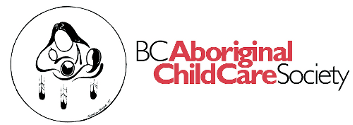Validity of the Aboriginal Children’s Health and Well-being Measure Nancy L. Young, Mary Jo Wabano, Koyo Usuba, Brenda Pangowish, Mélanie Trottier, Diane Jacko, Tricia A. Burke and Rita G. Corbiere [electronic resource] : Aaniish Naa Gegii? /
Material type: ArticlePublication details: 2015Description: 1 online resource : digital fileSubject(s): Well-being | Children -- Health aspects | Screening and assessmentOnline resources: Full text
In:
Health and Quality of Life Outcomes Vol. 13, no. 1 (2015)Abstract: Background
Aboriginal children experience challenges to their health and well-being, yet also have unique strengths. It has been difficult to accurately assess their health outcomes due to the lack of culturally relevant measures. The Aboriginal Children’s Health and Well-Being Measure (ACHWM) was developed to address this gap. This paper describes the validity of the new measure.
Methods
We recruited First Nations children from one First Nation reserve in Canada. Participants were asked to complete the ACHWM independently using a computer tablet. Participants also completed the PedsQL. The ACHWM total score and 4 Quadrant scores were expected to have a moderate correlation of between 0.4 and 0.6 with the parallel PedsQL total score, domains (scale scores), and summary scores.
Results
Paired ACHWM and PedsQL scores were available for 48 participants. They had a mean age of 14.6 (range of 7 to 19) years and 60.4 % were girls. The Pearson’s correlation between the total ACHWM score and a total PedsQL aggregate score was 0.52 (p = 0.0001). The correlations with the Physical Health Summary Scores and the Psychosocial Health Summary Scores were slightly lower range (r = 0.35 p = 0.016; and r = 0.51 p = 0.0002 respectively) and approached the expected range. The ACHWM Quadrant scores were moderately correlated with the parallel PedsQL domains ranging from r = 0.45 to r = 0.64 (p ≤ 0.001). The Spiritual Quadrant of the ACHWM did not have a parallel domain in the PedsQL.
Conclusions
These results establish the validity of the ACHWM. The children gave this measure an Ojibway name, Aaniish Naa Gegii, meaning “how are you?”. This measure is now ready for implementation, and will contribute to a better understanding of the health of Aboriginal children.
Keywords
Aboriginal Children Well-being Interviews Questionnaire
ArticlePublication details: 2015Description: 1 online resource : digital fileSubject(s): Well-being | Children -- Health aspects | Screening and assessmentOnline resources: Full text
In:
Health and Quality of Life Outcomes Vol. 13, no. 1 (2015)Abstract: Background
Aboriginal children experience challenges to their health and well-being, yet also have unique strengths. It has been difficult to accurately assess their health outcomes due to the lack of culturally relevant measures. The Aboriginal Children’s Health and Well-Being Measure (ACHWM) was developed to address this gap. This paper describes the validity of the new measure.
Methods
We recruited First Nations children from one First Nation reserve in Canada. Participants were asked to complete the ACHWM independently using a computer tablet. Participants also completed the PedsQL. The ACHWM total score and 4 Quadrant scores were expected to have a moderate correlation of between 0.4 and 0.6 with the parallel PedsQL total score, domains (scale scores), and summary scores.
Results
Paired ACHWM and PedsQL scores were available for 48 participants. They had a mean age of 14.6 (range of 7 to 19) years and 60.4 % were girls. The Pearson’s correlation between the total ACHWM score and a total PedsQL aggregate score was 0.52 (p = 0.0001). The correlations with the Physical Health Summary Scores and the Psychosocial Health Summary Scores were slightly lower range (r = 0.35 p = 0.016; and r = 0.51 p = 0.0002 respectively) and approached the expected range. The ACHWM Quadrant scores were moderately correlated with the parallel PedsQL domains ranging from r = 0.45 to r = 0.64 (p ≤ 0.001). The Spiritual Quadrant of the ACHWM did not have a parallel domain in the PedsQL.
Conclusions
These results establish the validity of the ACHWM. The children gave this measure an Ojibway name, Aaniish Naa Gegii, meaning “how are you?”. This measure is now ready for implementation, and will contribute to a better understanding of the health of Aboriginal children.
Keywords
Aboriginal Children Well-being Interviews Questionnaire
Background
Aboriginal children experience challenges to their health and well-being, yet also have unique strengths. It has been difficult to accurately assess their health outcomes due to the lack of culturally relevant measures. The Aboriginal Children’s Health and Well-Being Measure (ACHWM) was developed to address this gap. This paper describes the validity of the new measure.
Methods
We recruited First Nations children from one First Nation reserve in Canada. Participants were asked to complete the ACHWM independently using a computer tablet. Participants also completed the PedsQL. The ACHWM total score and 4 Quadrant scores were expected to have a moderate correlation of between 0.4 and 0.6 with the parallel PedsQL total score, domains (scale scores), and summary scores.
Results
Paired ACHWM and PedsQL scores were available for 48 participants. They had a mean age of 14.6 (range of 7 to 19) years and 60.4 % were girls. The Pearson’s correlation between the total ACHWM score and a total PedsQL aggregate score was 0.52 (p = 0.0001). The correlations with the Physical Health Summary Scores and the Psychosocial Health Summary Scores were slightly lower range (r = 0.35 p = 0.016; and r = 0.51 p = 0.0002 respectively) and approached the expected range. The ACHWM Quadrant scores were moderately correlated with the parallel PedsQL domains ranging from r = 0.45 to r = 0.64 (p ≤ 0.001). The Spiritual Quadrant of the ACHWM did not have a parallel domain in the PedsQL.
Conclusions
These results establish the validity of the ACHWM. The children gave this measure an Ojibway name, Aaniish Naa Gegii, meaning “how are you?”. This measure is now ready for implementation, and will contribute to a better understanding of the health of Aboriginal children.
Keywords
Aboriginal Children Well-being Interviews Questionnaire

There are no comments on this title.